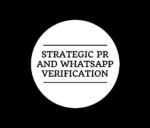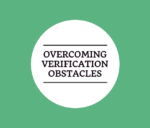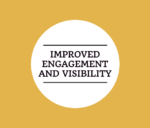How Can You Create Digital Products and Thrive in the Creator Economy?

Digital Products creation is no longer just an option—it’s a powerful way for entrepreneurs and small business owners to grow, connect with their audience, and make a lasting impact. But with so many options out there, from digital products to marketing strategies, where do you start?
This guide will show you the steps to create valuable digital products, become a digital creator, and understand what it truly means to be a digital marketer. By exploring practical advice, real-world insights, and actionable strategies, you’ll gain the tools you need to build your digital presence and drive growth.
Let’s simplify your path to becoming a digital leader.
How to Start Creating Digital Products?
Creating digital products can be an impactful way for entrepreneurs and small business owners to generate revenue and build authority in their niche. Here’s how to get started:
Step 1: Understand Your Audience
Before creating any digital product, know who you’re making it for. Identify your target audience and understand their challenges, preferences, and what solutions they are seeking. Tools like Think with Google can help you find popular topics and gain deeper insights into consumer behavior. First Analyse, “What problem can I solve for my customers?”
Step 2: Choose the Right Product Format
Choose a type of digital product that matches what you’re good at and what your audience needs.
Options include:
- eBooks and Guides: Best fit for knowledge transfer.
- Online Courses: Ideal if you’re an expert looking to teach others.
- Templates and Checklists: Useful for helping customers save time and streamline processes.
Step 3: Create High-Value Content
Make sure your content is helpful, interesting, and looks good.Tools like Visme and Animoto can help create professional-looking materials, even if you don’t have design experience. Incorporate visuals, such as infographics, to break down complex information and maintain your audience’s interest.
Step 4: Build a Minimum Viable Product (MVP).
Before launching a digital product, create an MVP to test the market viability. This basic version should have enough features to provide value and gather initial feedback.
For instance, if you’re launching an online course, release a pilot module to a small audience to see how it’s received and gather suggestions.
Step 5: User Testing and Feedback
Run a beta test with a select group of users to refine your product based on their feedback. This step helps you identify areas for improvement before a larger launch.
Collect feedback through short surveys or user reviews and be open to making necessary adjustments. Platforms like Typeform make collecting feedback easy and engaging.
Step 6: Market and Launch Your Product
A strong marketing strategy is crucial for success. Use your website as the main hub to promote your product and consider creating a landing page to highlight its benefits.
Share valuable content related to your product on social media to generate buzz and drive traffic. ConvertKit is a great tool for creating targeted email campaigns to announce your product and send promotions directly to potential customers.
Step 7: Monitor and Adjust
Once your product is live, track its performance using analytics tools like Hotjar to gain insights into user behavior.
Track trends in user engagement with your content and spot areas that could use improvement. Be ready to adjust your marketing plan and product based on this analysis.
Real-Life Example: Entrepreneur Marie Forleo launched her online course, “B-School,” after understanding the challenges small business owners face with digital marketing. By starting small and refining her content based on user feedback, she created a course that has helped thousands of entrepreneurs grow their businesses.
Key Insight: Research from Statista shows that 67% of consumers prefer learning through self-paced content like online courses and eBooks. This makes digital products not only valuable for the audience but also a scalable revenue source for businesses.
How to Become a Digital Creator?
Becoming a digital creator opens doors to creative expression and potential revenue streams. Here’s how you can embark on this path step by step:
Identify your specific niche and target audience.
Start by identifying what you’re passionate about and what aligns with your expertise. Whether it’s fashion, tech reviews, or educational content, choosing a niche helps you stand out. Understand your audience’s needs and desires.
This insight will guide your content creation and ensure that your work resonates with your target market. Platforms like Think with Google can help you gain consumer insights.
Step 2: Choose Your Content Formats and Platforms
Decide on the type of content you want to create—written articles, podcasts, videos, or visual designs. Select platforms that best suit your format and audience.
For instance, if you focus on video content, YouTube or TikTok may be the ideal choice, while Instagram and Pinterest work well for visual content. If you enjoy writing, consider blogging or posting long-form content on LinkedIn.
Step 3: Build Your Skills and Knowledge
Continuous learning is essential. Develop the skills needed for your chosen content type, such as video editing, graphic design, or audio production.
Online resources like Udemy and Skillshare offer courses to improve these skills. Keep up with the latest trends and tools to ensure your content stays relevant.
Step 4: Create High-Quality, Engaging Content
Creating value-rich Digital Products that educates, informs, or inspires is essential. Quality matters more than quantity; ensure your content is clear, well-structured, and visually appealing.
Use tools like Canva for designing graphics or Grammarly to polish your writing. Aim to solve problems for your audience or provide them with insights that keep them coming back.
Step 5: Build an Online Presence and Community
Consistency is crucial. Make a regular posting schedule and stick to it so your audience stays interested. Reply to comments and messages, and work with other creators to reach more people..
Building a community around your content will foster loyalty and increase visibility.
Step 6: Monetize Your Content (Optional)
Once you’ve established a presence, you can explore monetization options. This could include:
- Earn money from ads: Platforms like YouTube share ad earnings with creators. Keep improving your content by paying attention to how users respond to it.
- Brand Sponsorships: Partner with brands to promote products in your content.
- Affiliate Marketing: Promote products and earn commissions on sales through unique affiliate links.
- Selling Digital Products: Create and sell online courses, eBooks, or templates.
- Offering Services: Use your expertise to offer freelance work, consulting, or coaching.
Key Insight: According to Statista, the creator economy is valued at over $100 billion, showcasing the vast potential for income and growth.
Takeaway: Becoming a digital creator is not just about posting content; it’s about building a brand, nurturing a community, and continuously learning. Stay adaptable and focus on delivering value, and your journey as a digital creator will be both fulfilling and rewarding.
What is the Role of a Digital Marketer in Driving Business Growth?
Digital marketers play a crucial role in helping small businesses thrive by strategically boosting their online presence and engagement. Their responsibilities go far beyond creating Digital Products like posts or running ads; they act as the architects of a brand’s entire digital strategy. Let’s explore how digital marketers contribute to the growth and success of small businesses.
1. Crafting a Targeted Strategy
A digital marketer starts by defining business goals and aligning them with an actionable strategy. This involves:
- Identifying the ideal target audience.
- Understanding their pain points.
- Developing campaigns that resonate with them.
According to a report by HubSpot, businesses that use customer insights in their strategies see a 93% increase in customer retention. This sets the basis for efficient marketing efforts.
2. Creating High-Quality, Engaging Content
Content creation is one of the primary tasks for digital marketers. This extends beyond blogs or social media posts to include:
- Videos.
- Infographics.
- Podcasts.
The goal? To inform, entertain, or solve problems for the audience. Content Marketing Institute highlights that 60% of consumers feel more connected to a brand after consuming high-quality content. For small businesses, this can mean higher engagement and stronger brand loyalty.
3. Website Optimization for User Experience and SEO
Digital marketers ensure that a business’s website is:
- User-friendly.
- Mobile-responsive.
- Optimized for search engines (SEO).
This includes enhancing loading speed and strategically using keywords. Backlinko states that websites loading within two seconds have a 15% higher conversion rate. SEO is especially valuable for businesses looking to drive organic traffic without large advertising budgets.
4. Managing Multi-Channel Campaigns
Digital marketing doesn’t work in isolation. Marketers plan and coordinate campaigns across multiple platforms such as:
- Social media.
- Email marketing.
- SEO.
- PPC advertising.
An Omnisend report found that campaigns running on three or more channels have a 90% higher retention rate than single-channel campaigns. This integrated approach ensures that the brand message stays consistent and impactful.
5. Data Analysis and Performance Optimization
A data-driven approach is vital. Digital marketers use tools like Google Analytics to monitor metrics such as:
- Website traffic.
- Engagement rates.
- Conversion statistics.
Forrester Research notes that data-driven businesses are 23 times more likely to acquire customers. Regular analysis helps marketers fine-tune their strategies and ensure they align with business goals.
6. Building Community and Brand Trust
Digital marketers build relationships through:
- Active social media engagement.
- Email campaigns.
- Community-building initiatives.
Responding to comments, hosting Q&A sessions, and interactive Digital Products & content creation help build a strong, loyal community. A trusted brand sees more word-of-mouth marketing and long-term success.
7. Embracing Ethical and Sustainable Practices
Modern digital marketers prioritize ethical and sustainable practices. This includes:
- Reducing the carbon footprint of digital campaigns.
- Ensuring content is inclusive and accessible.
Forbes highlights that sustainable marketing practices can greatly enhance a brand’s reputation.
Why This Matters
Digital marketers don’t just drive traffic; they create Digital Products for meaningful interactions and foster growth. For small businesses, having a skilled digital marketer can mean the difference between mere online presence and becoming a trusted, leading brand.
With their strategic planning, content expertise, data insights, and commitment to sustainability, digital marketers help businesses adapt, grow, and stay ahead in an ever-changing digital landscape.
In essence, digital marketers are versatile professionals who blend strategic vision, creativity, and analytical skills. Their work helps businesses connect with their audiences, build loyalty, and achieve long-term growth.
For small business owners looking to elevate their digital presence, remember that digital marketing & Digital product creation is not a one-time task but a continuous process that requires adaptability and a deep understanding of your audience.
Conclusion
Embracing digital product creation and marketing is essential for business growth today. Whether you’re crafting digital products, stepping into content creation, or enhancing your marketing strategies, the fundamentals remain the same: understand your audience, create valuable content, and stay flexible.
Success comes from learning, experimenting, and engaging with your community. Keep evolving, fine-tune your strategies, and seize the digital opportunities in front of you. Start now, and watch your business grow and thrive in the digital age.
Stay ahead in the digital game! Join our newsletter for valuable tips, insights, and strategies to elevate your digital marketing and creation journey. Don’t miss out on expert advice that can transform your business—subscribe now!





